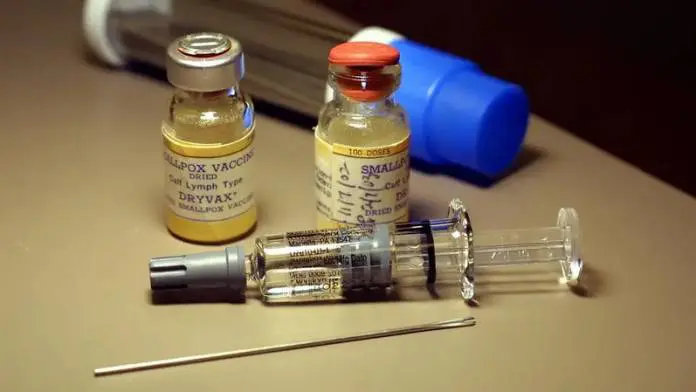
Federal health officials said about 15 vials suspected to contain smallpox in Pennsylvania do not contain the viral disease. A lab worker discovered 5 vials labeled “smallpox” and 10 vials labeled “vaccinia” while cleaning out a freezer at a Merck facility in Montgomery County, Philadelphia. The worker notified the Centers for Disease Control and Prevention (CDC) who conducted tests on the vials.
The CDC later revealed that the vials do not contain live variola – the virus that causes smallpox; but some of them contain vaccinia – the agent used to develop smallpox vaccines. The CDC said the vials were tested in collaboration with the World Health Organization (WHO) in partnership with law enforcement.
The agency said there is no proof that anyone has been exposed to smallpox yet – the lab worker wore gloves and face mask during the cleaning process.
The CDC stated that “there is no evidence that the vials contain variola virus, the cause of smallpox,” and the Pennsylvania Department of Health emphasized that “the Pennsylvania Department of Health would like to stress that there has been no known threat to public health and safety.”
Smallpox is a highly contagious viral disease that causes fever, body weakness, blistering that contain pus, and skin rashes that become scars after they heal. About 3 of out 10 infected persons die from the disease, the CDC stated. More than 300 million people died from smallpox in the 20th century and the last outbreak in the United States was in 1949 while the last known natural case was in Somalia in 1977.
The CDC said “there is enough smallpox vaccine to vaccinate every person in the United States” in the event of an outbreak.
There are only two authorized smallpox research centers in the world – in the United States and in Russia. Researchers study the live virus with the aim of developing vaccines, creating drugs, and making diagnostic tests in case people are ever exposed to the disease. The WHO said smallpox can be used for bioterrorism, and it is highly lethal even when freeze-dried and kept cold for many years.
Given that six vials of live smallpox virus were discovered in Washington in July 2014, scientists believe a few stockpiles may be hidden elsewhere in the United States and around the world. This raises the question whether viral samples of the disease should be kept for government research or if they should be destroyed altogether.











